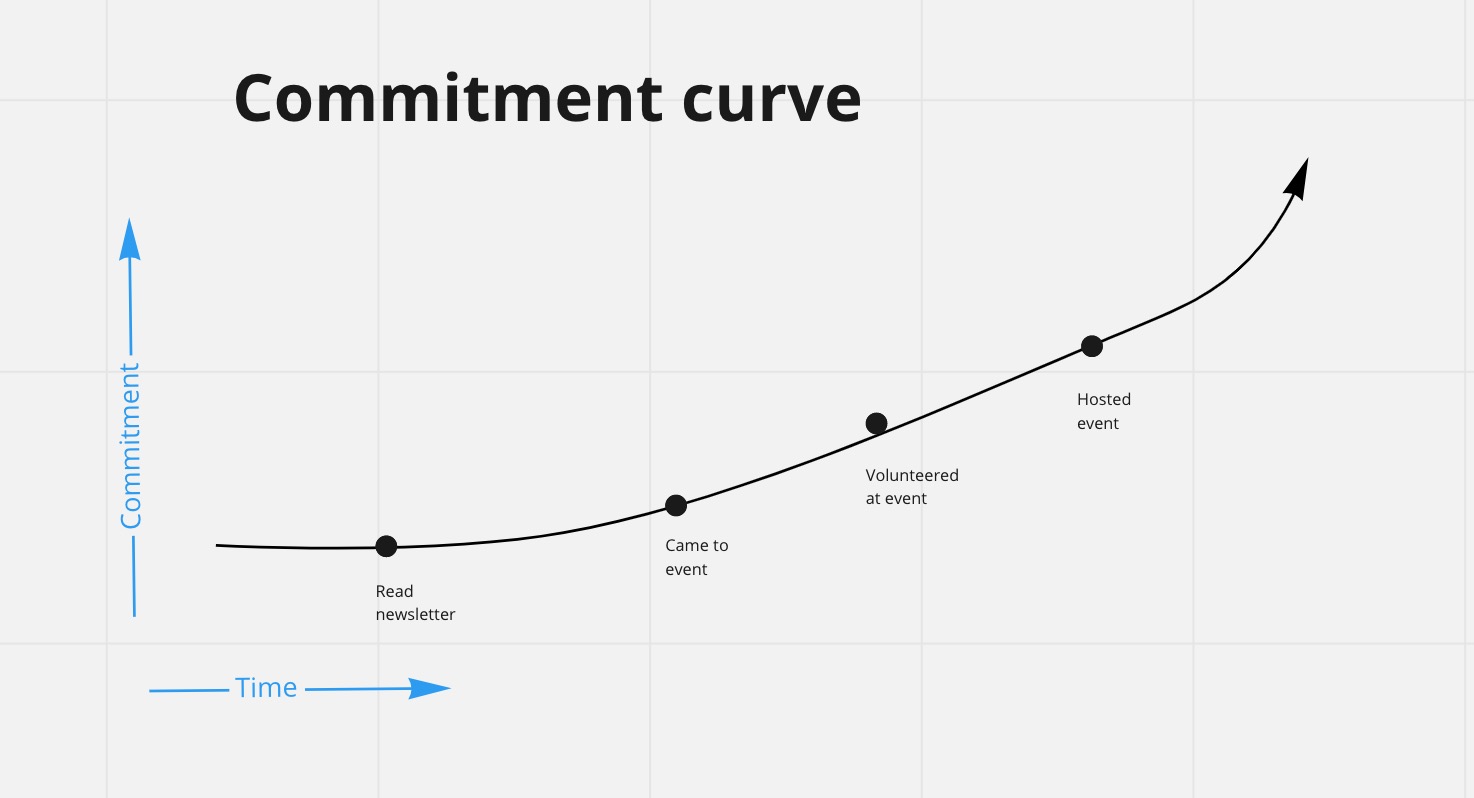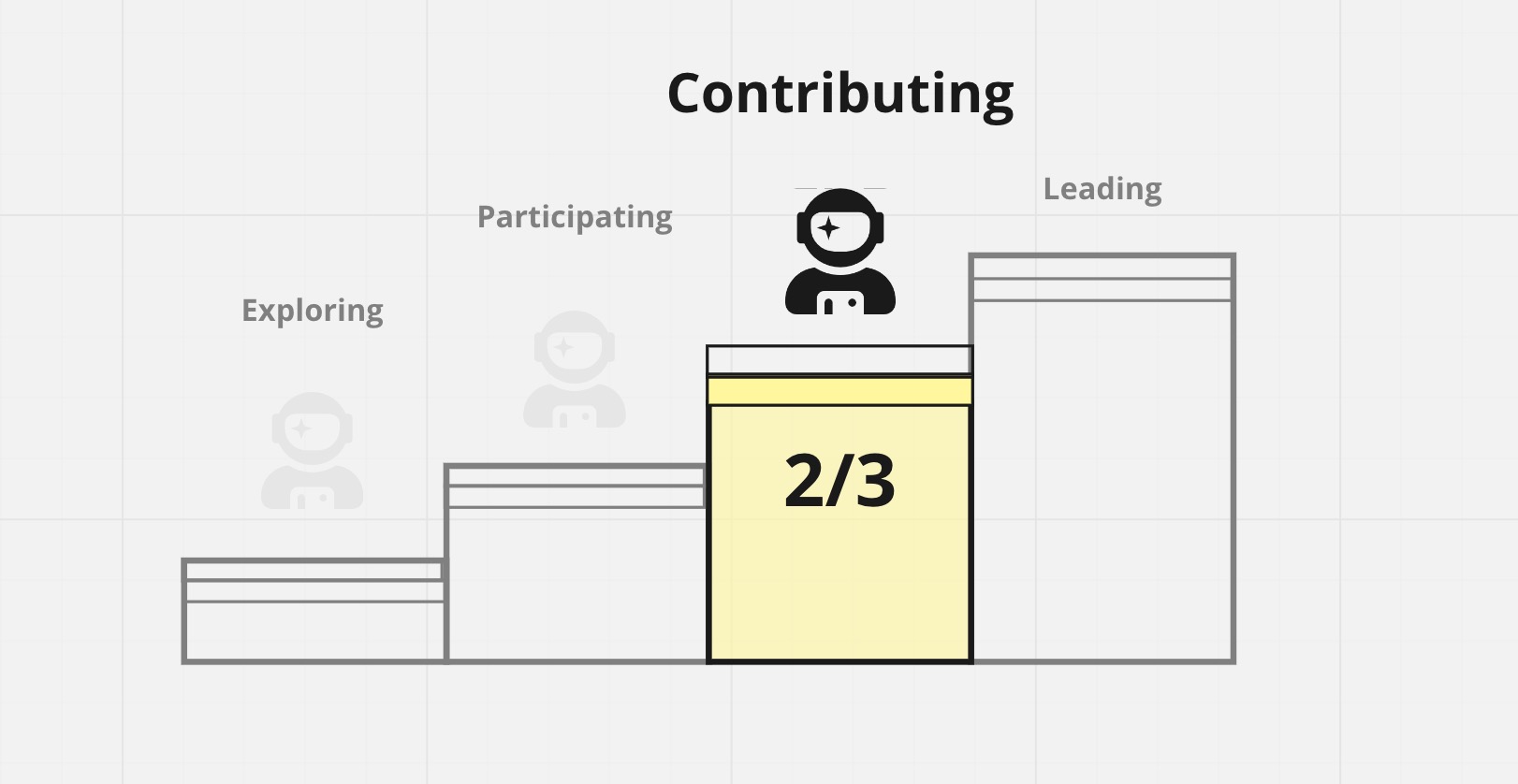Love
People love the things that bring them happiness and value, especially their favorite communities and people. In the Orbit Model, we prefer words like love and reach to words like engagement and influence. Using the words that members do helps us stay grounded in their experience.
Love is the measure of the member's level of involvement in the community.
Love is based on how often the member participates — their presence — and the level of commitment they show through their actions. A member's love determines their orbit level and their position in the community's field of gravity.
Before we discuss measuring and increasing love, let's first look at the two main components: presence and commitment.
Presence
Presence is a measure of a member's pattern of activity.
It includes the frequency and regularity with which a member participates. Increasing presence is one way that a member can increase their love.
Presence can be separated into frequency and recency.
Frequency tells us how often the members participates.
Recency tells us how long it's been since they were last active.
Here's an example for a handful of different members.
| Member | Frequency | Recency |
|---|---|---|
| Davis | 4 days active / week | Active 2 days ago |
| Mary | 2 days active in the last year | Active 95 days ago |
| Avery | 1 day active / month | Active 60 days ago |
Every member has a baseline of participation: daily, weekly, yearly or some value in-between.
Representing presence
Presence is like a pressure gauge. The gauge is neutral if the member is participating at their baseline frequency. The gauge is low if the member's activity has been decreasing. The gauge is high if the member is more active than their baseline.

Deviations from neutral signal that action by a community builder may be required. If presence in your community is generally low, consider creating more opportunities to participate or increasing the value that the community creates for its members.
Commitment
Commitment is a measure of a member's depth of involvement and level of leadership. To analyze commitment, we look at the types of activities that a member is doing. Each different activity type represents a different level of commitment, ranging from passive to active, from consumption to participation to ownership.
| Activity type | Commitment |
|---|---|
| Organized a meetup | Active ownership |
| Volunteered at a meetup | Active participation |
| Attended a meetup | Passive participation |
| Read the newsletter | Passive consumption |
Riding the commitment curve
An ideal member journey can be seen as a progression up a commitment curve. The member starts off by doing lightweight, low-commitment activities. Over time, they become a community leader by doing more intensive, higher responsibility activities.

For an open source community, an example commitment curve journey might look like:
- Star a repository
- Open an issue
- Submit a pull request
- Publish a blog post
Mapping the commitment curves in your community will help you offer the right opportunity to the right person at the right time, in order to help them move up the curve and closer to your community's center of gravity.
Representing commitment
A member's commitment is represented by their orbit level. The level determines where a member is displayed in the community's field of gravity.
